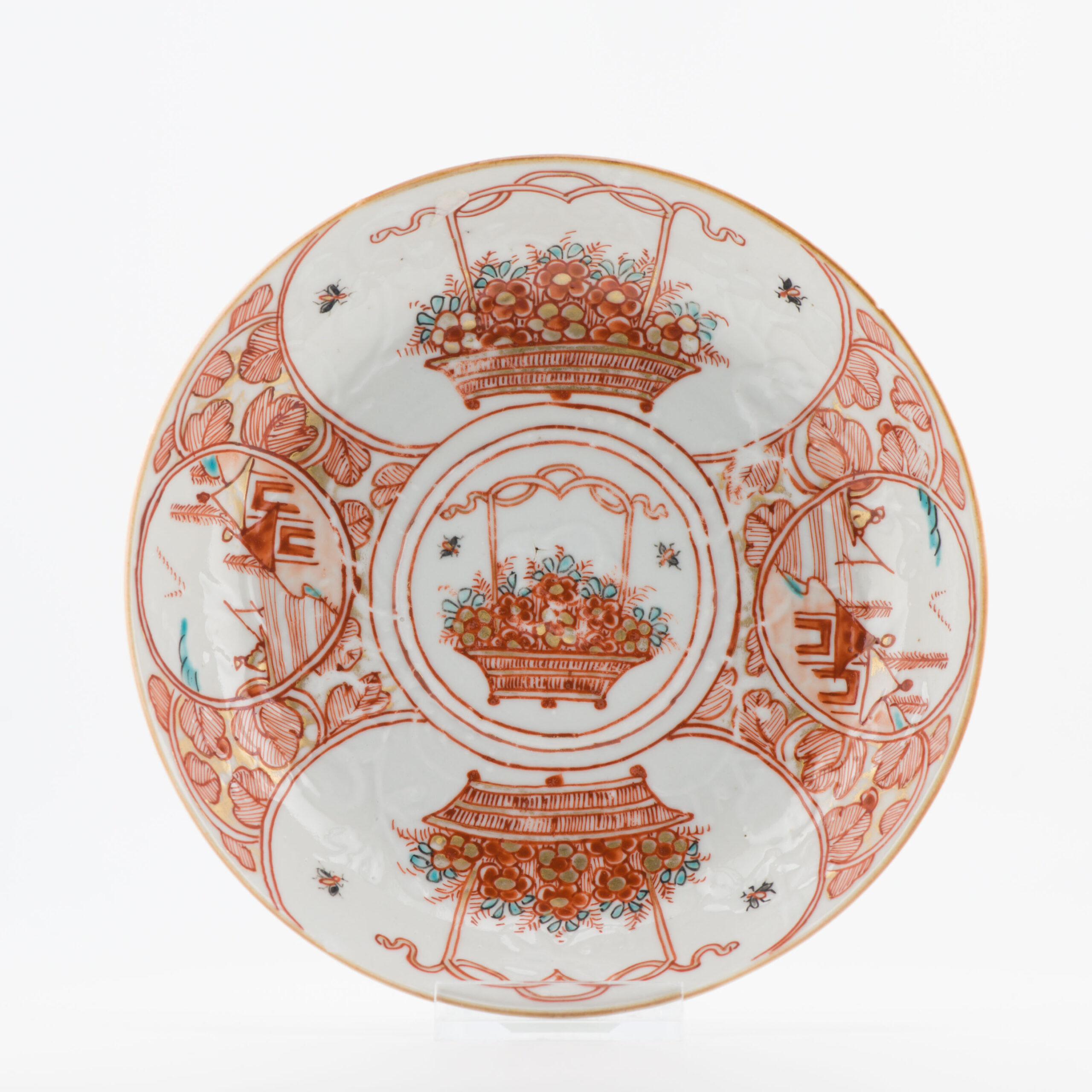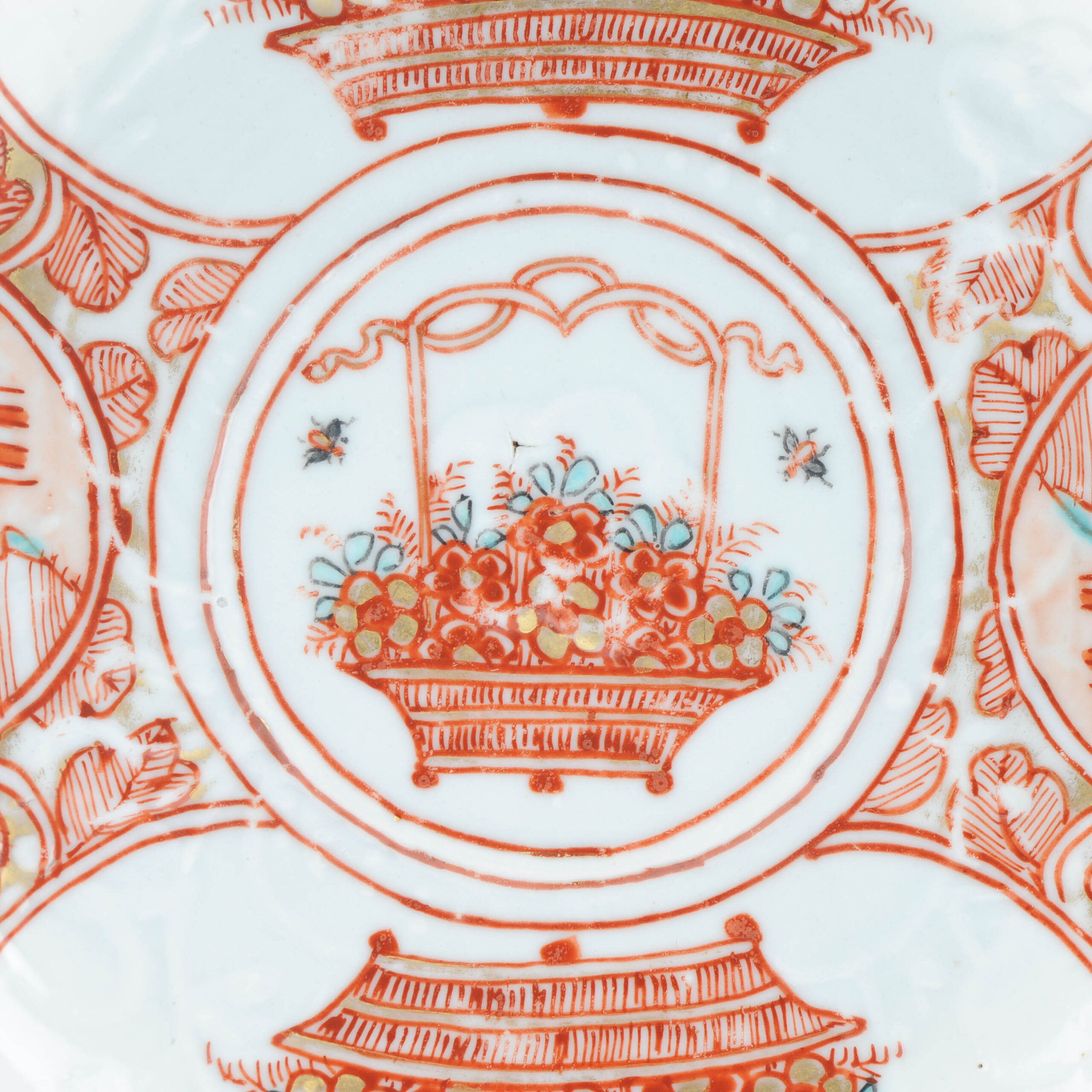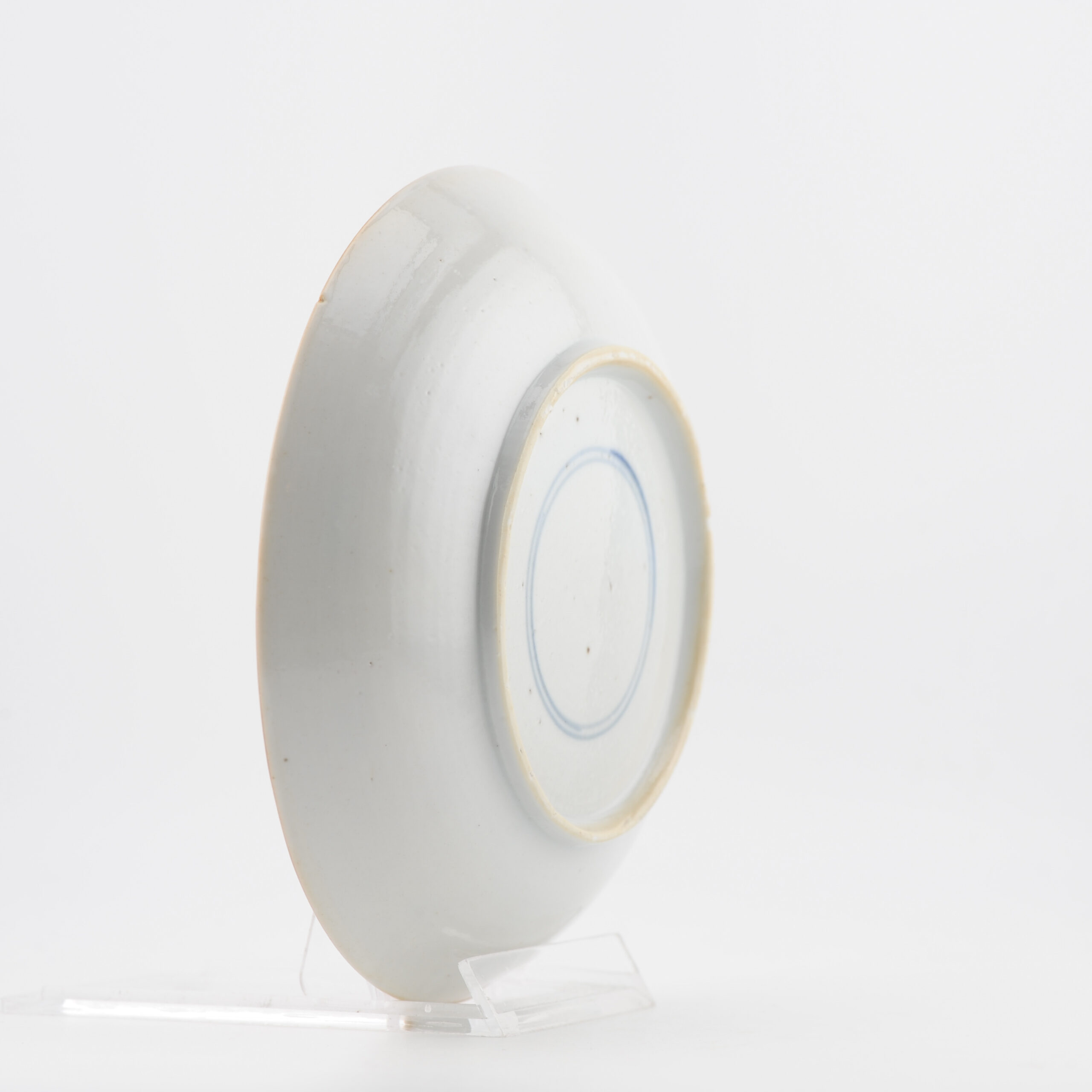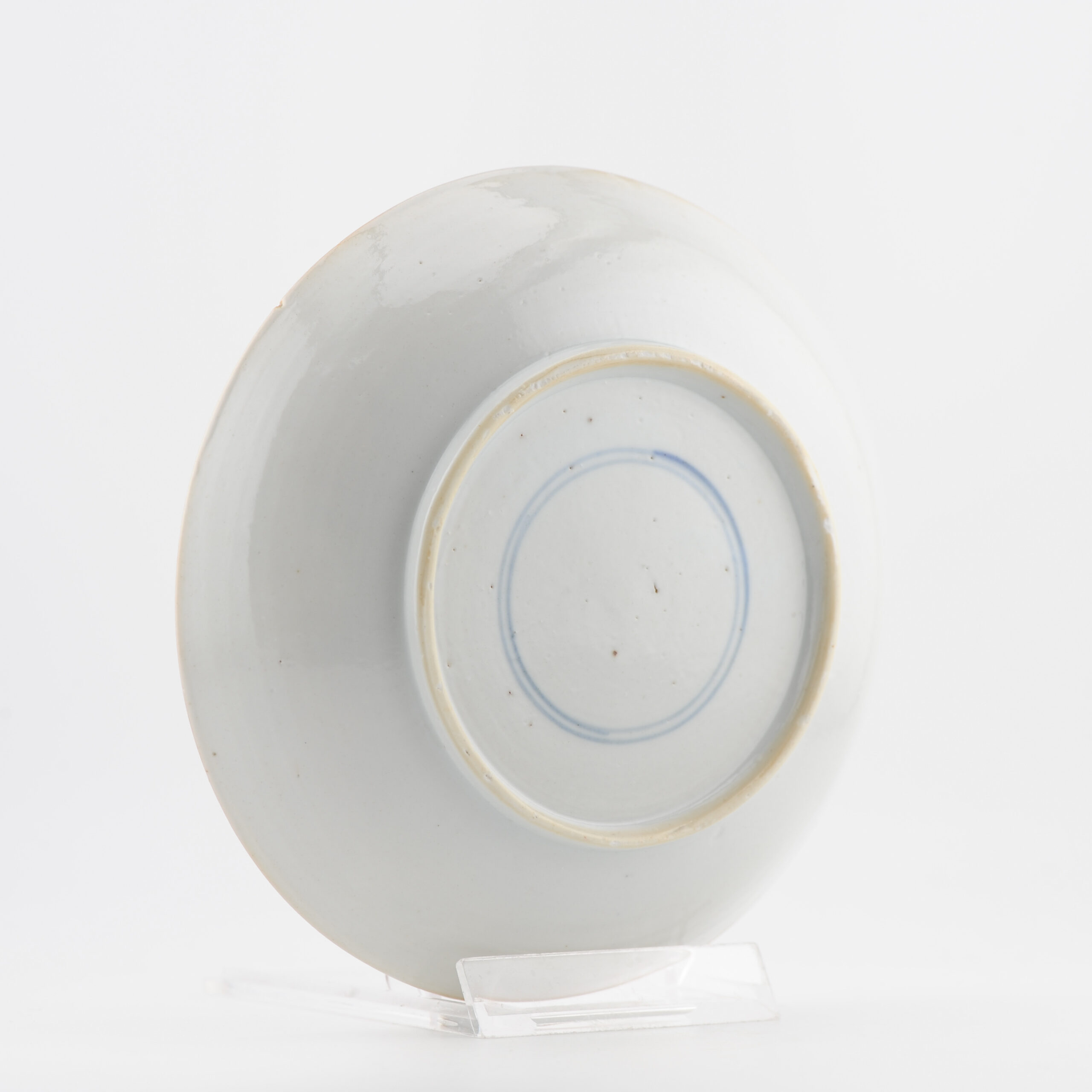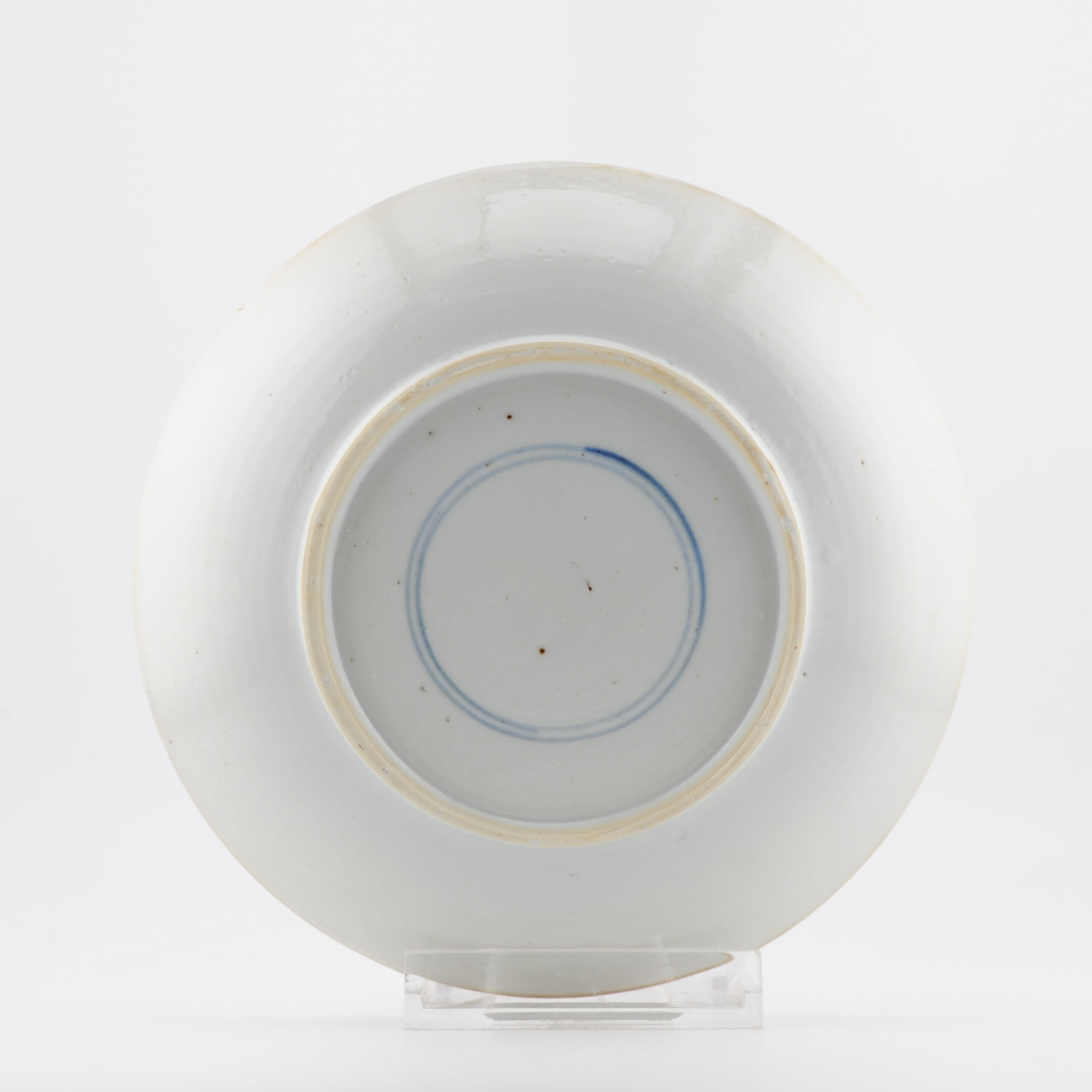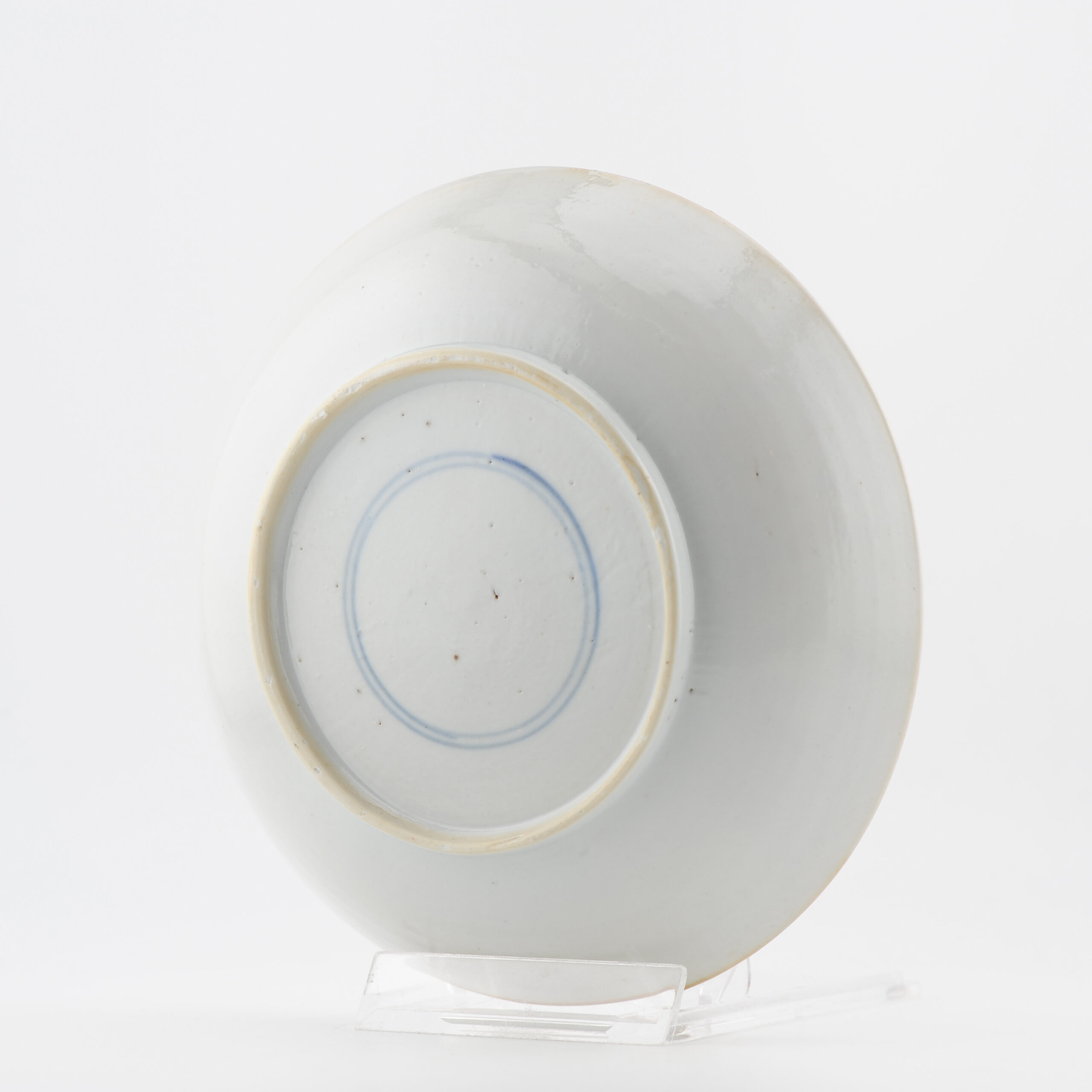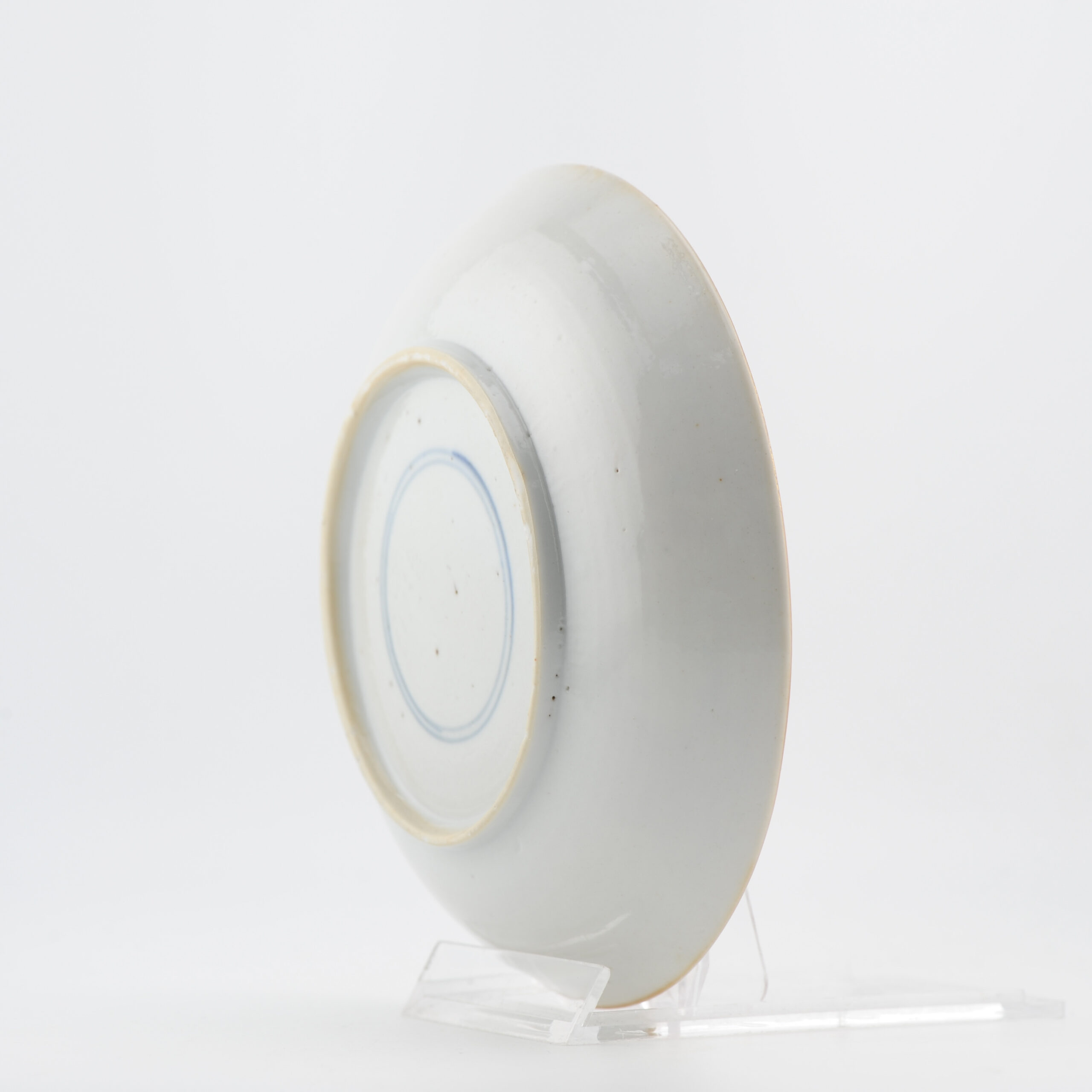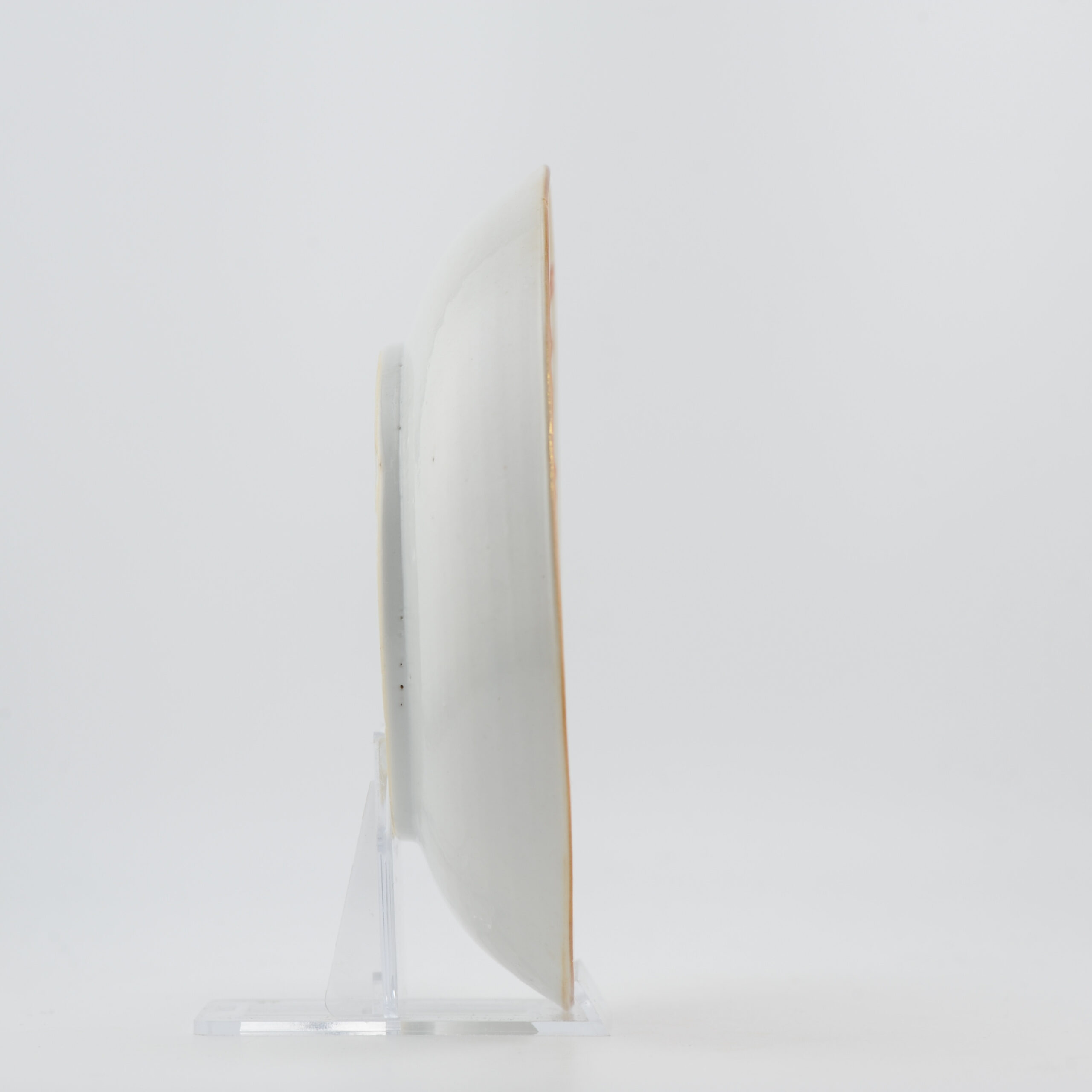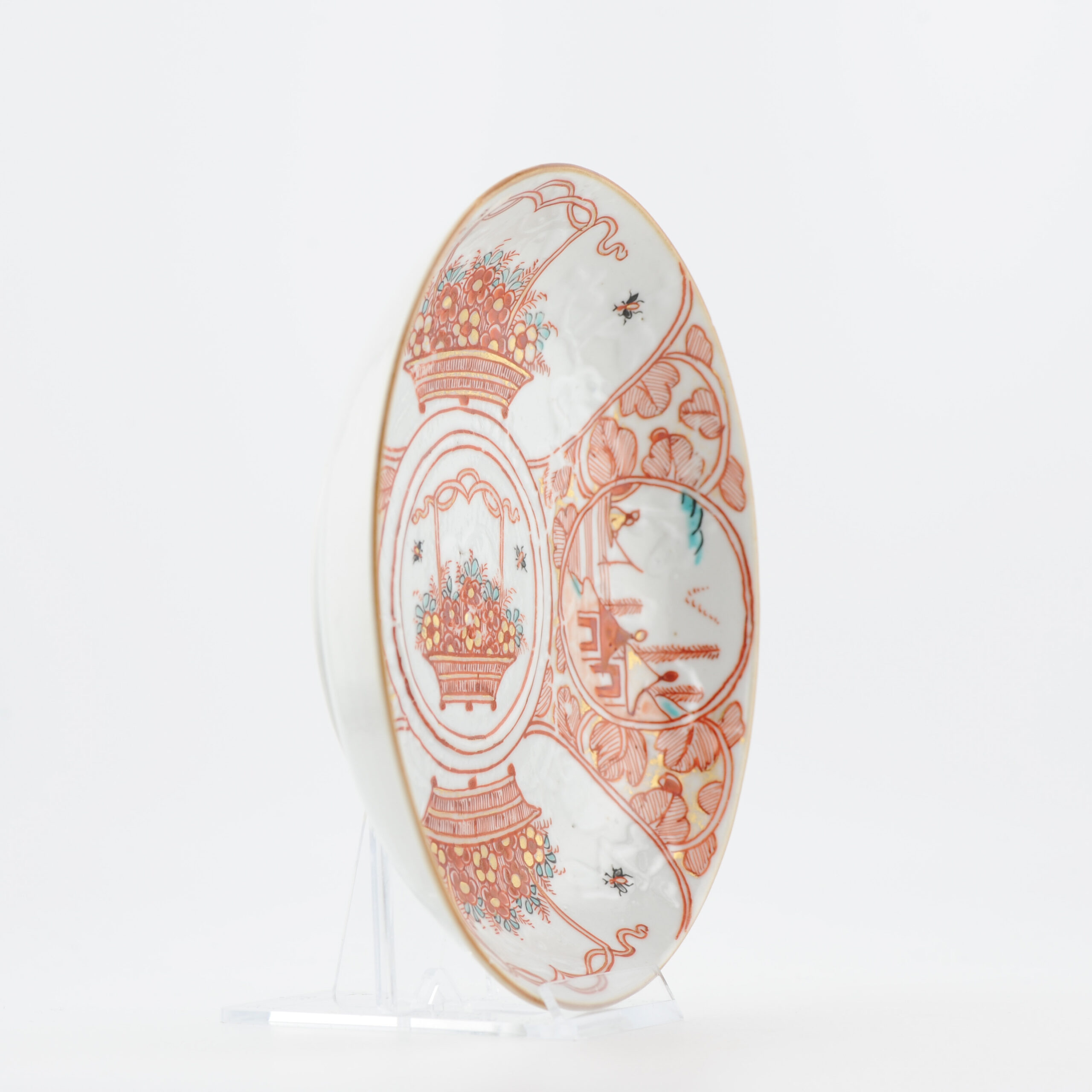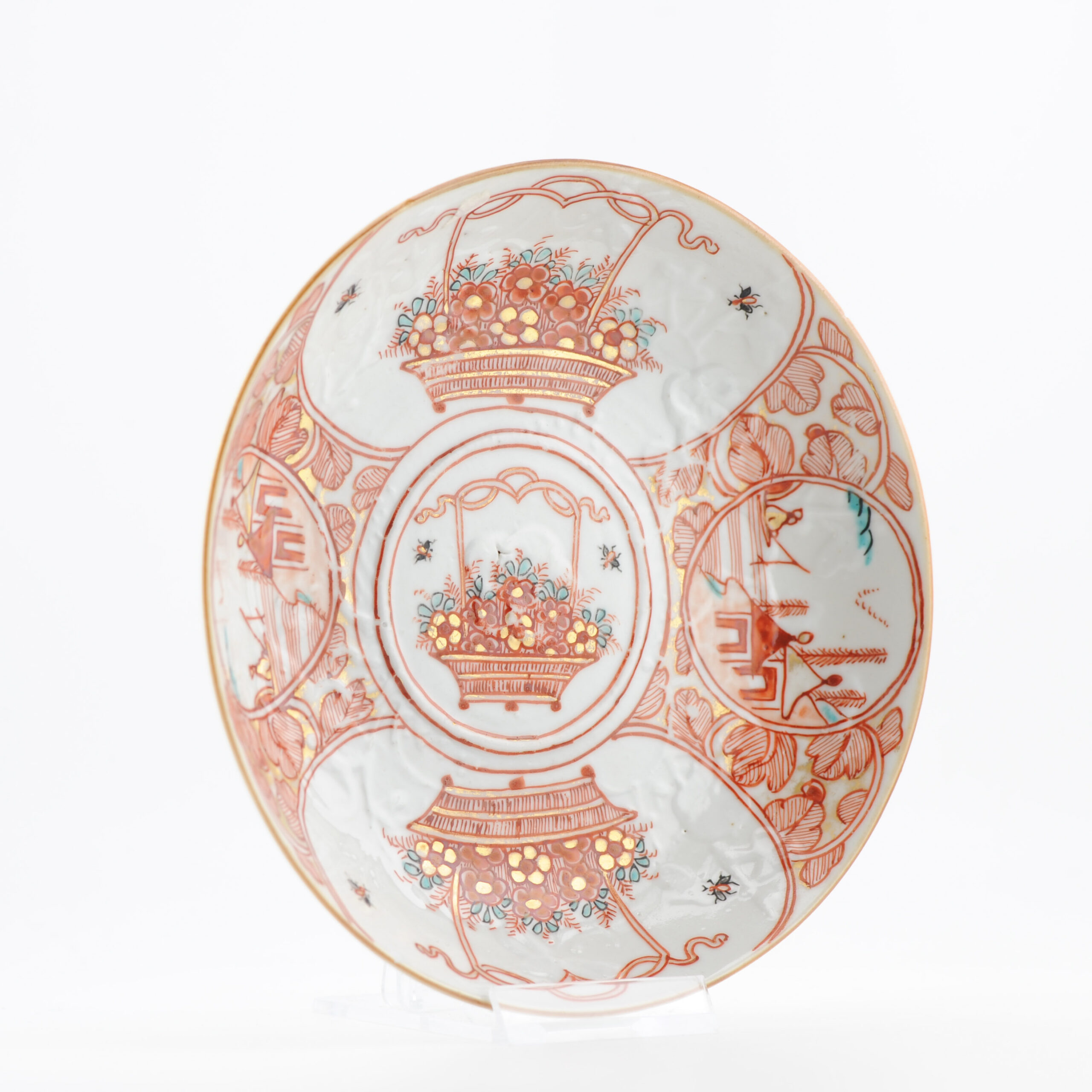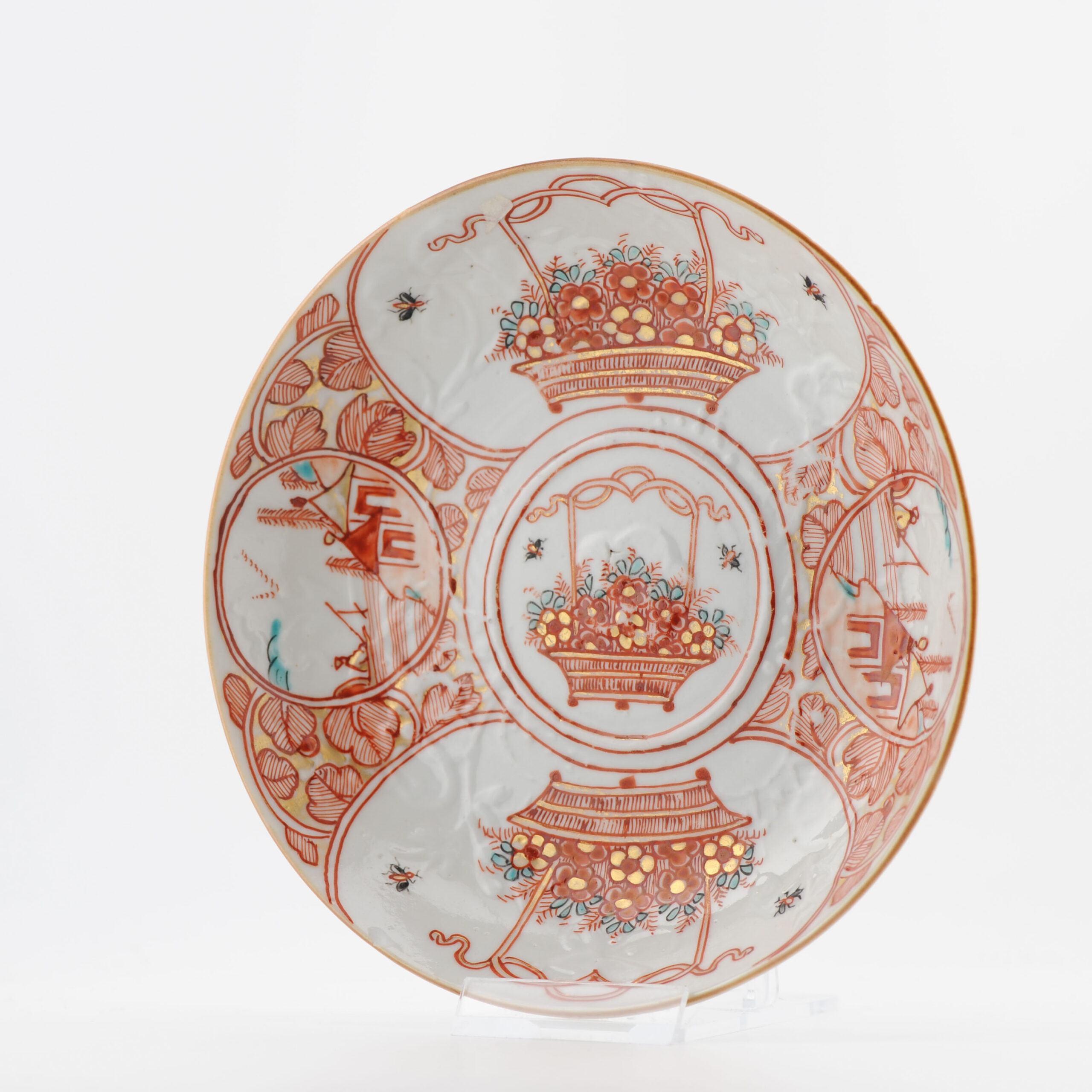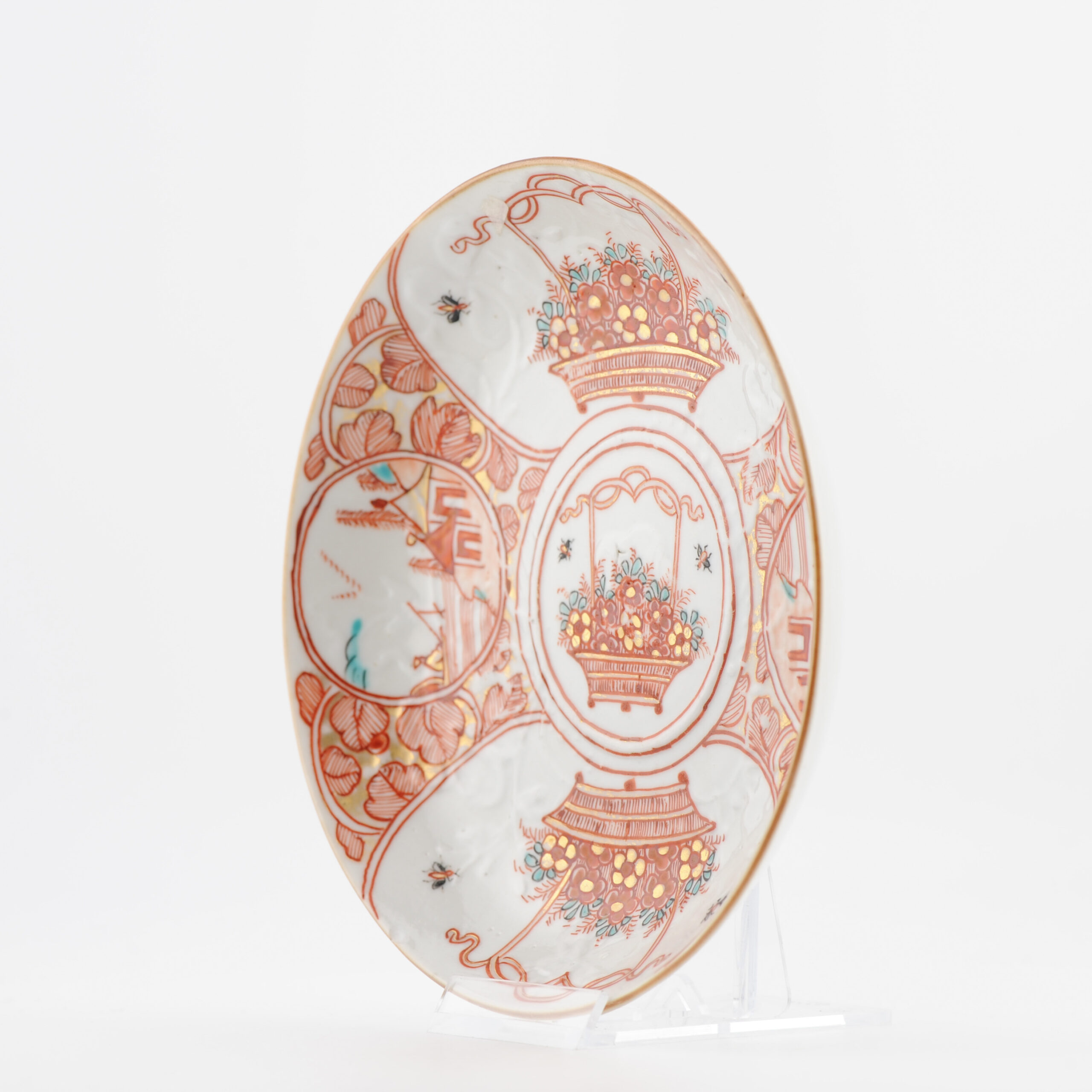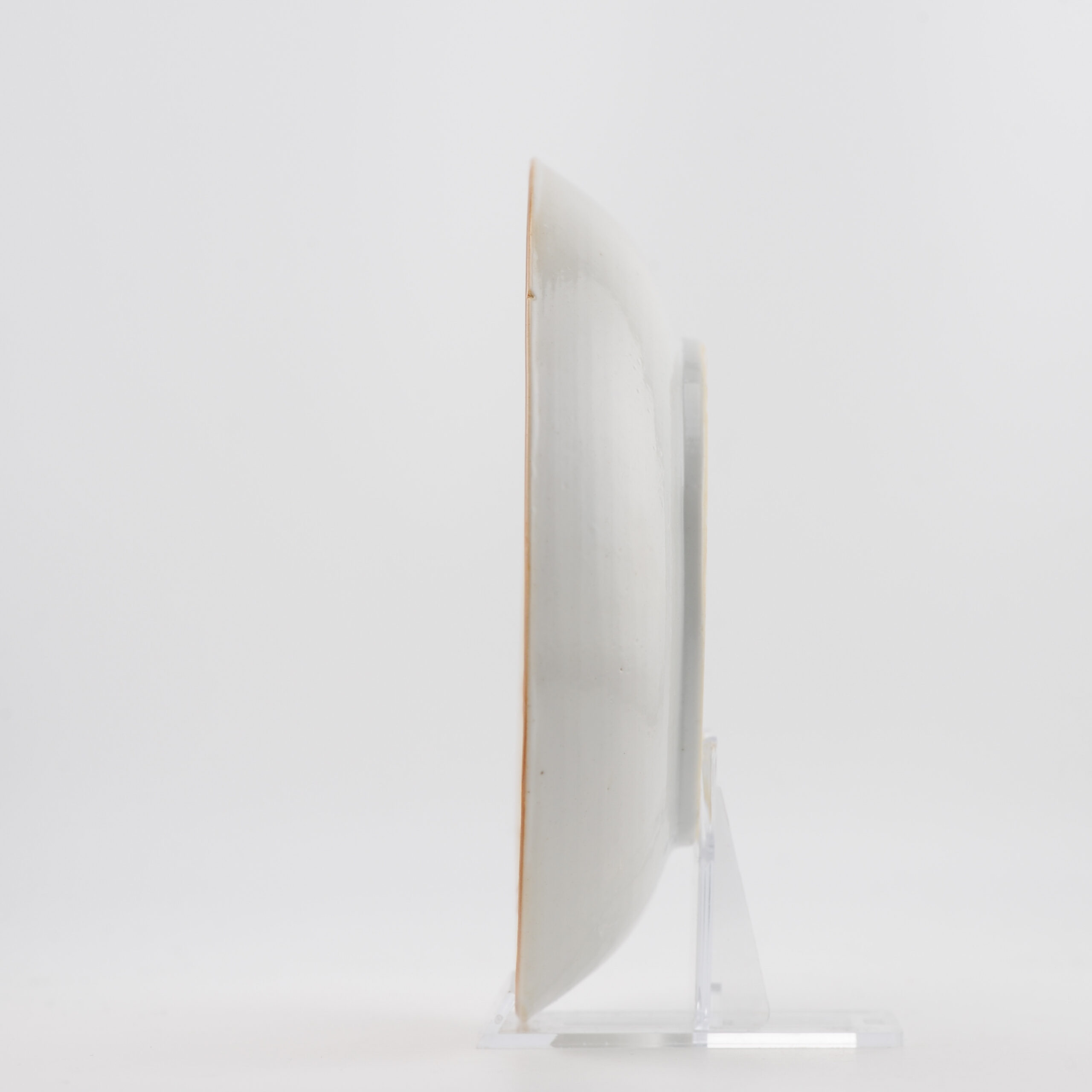1368 Antique Chinese Dish with Anhua and relief Amsterdam Bont Dish. Redecorated in Holland
Description:
1368 Antique Chinese Dish with Anhua and relief Amsterdam Bont Dish. Redecorated in Holland
Diameter: 140mm approx
Period:1700-1730
Code:40
Provenance: Venduehuis Den Haag – Collectie Dirk van Duivenbode (1950-2023), HilversumAnhua (暗花) is a decorative technique used in Chinese porcelain that translates to “hidden decoration” or “secret design.” It involves creating patterns or motifs that are almost invisible to the naked eye but become visible when light passes through the porcelain or when viewed at a certain angle. This subtle and delicate form of decoration is typically found on fine white porcelain, especially from the Ming and Qing dynasties.
Characteristics of Anhua:
- Subtle Engraving or Carving: The designs are incised, lightly engraved, or molded into the porcelain body before it is glazed. After glazing, the patterns are faintly visible under the transparent glaze but do not stand out as a painted or colored decoration would.
- Visible Under Light or Translucency: Anhua designs are often visible when held up to the light or under close examination. The patterns are delicate, and because of their subtlety, they are sometimes referred to as “secret” or “hidden” decoration.
- Common Motifs: Anhua designs often feature traditional Chinese motifs such as dragons, flowers, clouds, or waves. They can range from geometric patterns to more intricate designs, depending on the piece’s function and period.
Additional Information
| Type | |
|---|---|
| Region of origin | China |
| China dynasty period | Qing (1661 – 1912) |
| Decoration type colour | Amsterdam Bont |
| Century | 18th century |
| Size | 14cm-17cm |
